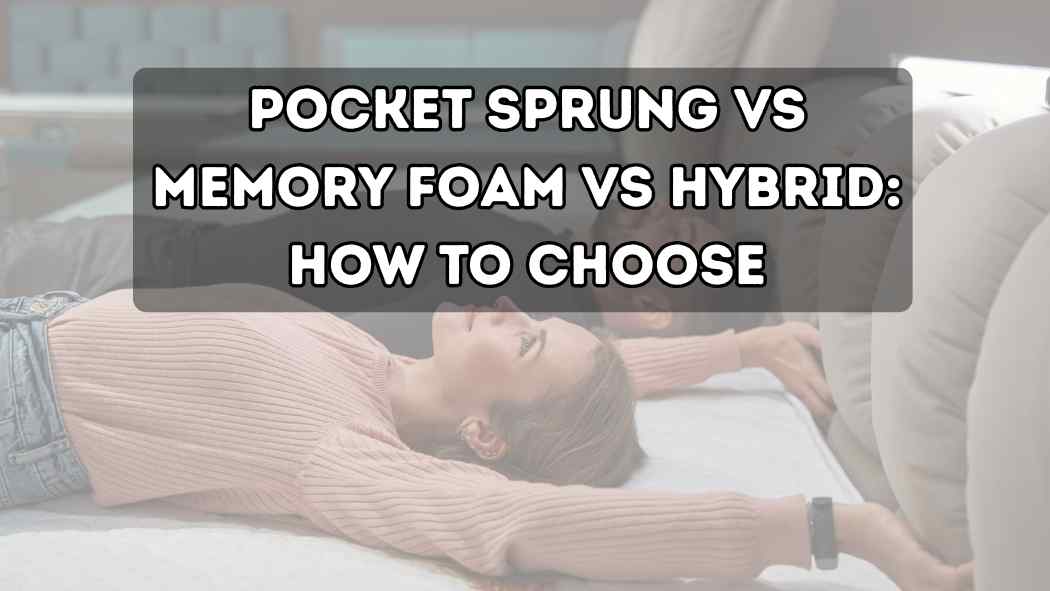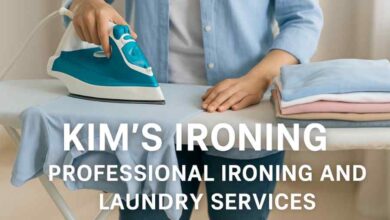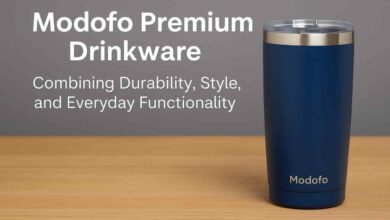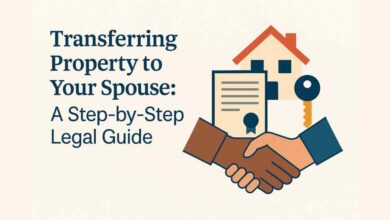Pocket Sprung vs Memory Foam vs Hybrid: How to Choose

Choosing the right mattress can feel overwhelming given the plethora of options available on the market today. Among the most popular types are pocket sprung, memory foam, and hybrid mattresses. Each of these types has unique features, benefits, and drawbacks that cater to different sleep styles and preferences. Understanding these differences is essential to making an informed choice, ensuring that you find a mattress conducive to restful sleep.
If you’re uncertain about which type of mattress will best suit your needs, exploring options like the differences between pocket sprung and memory foam can clarify your decision-making process. For a detailed comparison of these options, you can read about hybrid vs memory foam explained to get a deeper understanding of their characteristics.
This blog will help you examine the pros and cons of pocket sprung, memory foam, and hybrid mattresses, so you can confidently select the one that will give you the best night’s sleep.
Understanding Pocket Sprung Mattresses
Pocket sprung mattresses are designed with individually wrapped coils that respond to body weight and pressure. This construction allows each spring to move independently, providing tailored support and comfort regardless of body type or sleeping position. The number of springs can vary, usually ranging from 600 to over 3000, with higher spring counts generally offering better support and durability.
The main advantage of pocket sprung mattresses is their excellent ventilation and airflow, which helps to regulate temperature, keeping you cool during sleep. Additionally, they provide a bouncy feel, making it easier to change positions during the night without disturbing your partner. However, they may require more maintenance, such as regular rotation and flipping to prevent sagging.
Exploring Memory Foam Mattresses
Memory foam mattresses, made from viscoelastic foam, are known for their body-contouring capabilities. Originally developed by NASA, this material conforms to your body’s shape, providing personalized support. Its ability to distribute weight evenly can significantly reduce pressure points, leading to improved spinal alignment and overall comfort.
One of the standout features of memory foam is its motion isolation, which makes it an excellent choice for couples. It minimizes disturbances from movements, allowing for a more restful sleep. However, memory foam mattresses can retain heat, making some sleepers feel warm throughout the night. Choosing a memory foam mattress with cooling gel technology can help mitigate this issue, enhancing comfort for hot sleepers.
The Benefits of Hybrid Mattresses
Hybrid mattresses combine the best features of pocket sprung and memory foam mattresses. They typically consist of a supportive base layer of pocket springs topped with a foam layer for added comfort. This design provides a balanced sleeping surface that caters to various preferences, making it suitable for a wide range of sleepers.
One of the appealing aspects of hybrid mattresses is their versatility. They offer the bouncy support of pocket springs while still contouring to your body for comfort. Additionally, hybrids often have better temperature regulation than traditional memory foam due to the air circulation provided by the springs. However, they can be heavy and may not last as long as pure memory foam mattresses, which tend to have a longer lifespan.
Comfort Needs vs. Mattress Types
When deciding between pocket sprung, memory foam, and hybrid mattresses, it’s critical to consider your comfort needs. If you prioritize great support and a traditional feel, a pocket sprung mattress may be the best choice for you. These mattresses are particularly advantageous for back sleepers who require more support along their spine.
Conversely, if you struggle with pressure points or often experience joint pain, memory foam may be the ideal solution. Its body-contouring nature excels at relieving pressure, making it beneficial for side sleepers.
For those who appreciate the benefits of both types, a hybrid mattress provides a balanced option. It’s an excellent choice for couples with different sleeping preferences, as it caters to varying comfort needs without compromising support.
Temperature Regulation Considerations
Temperature regulation is another important factor in mattress selection. Memory foam mattresses, while comfortable, often have a reputation for retaining heat. If you are a hot sleeper, this can be a significant drawback. Look for models that offer cooling features, such as gel-infused memory foam or breathable covers to help dissipate heat.
On the other hand, pocket sprung mattresses generally provide better airflow. Their open structure allows for more ventilation, offering a cooler sleeping experience. Hybrid mattresses accommodate both qualities, often using breathable materials along with springs for effective temperature control. When choosing your mattress, consider your sleeping temperature preferences and how each type of mattress meets those needs.
Durability and Maintenance
Durability is an essential consideration when choosing a mattress because it relates directly to your investment. Memory foam mattresses are typically the longest-lasting option, often maintaining their shape and support for 10 to 15 years if properly cared for. They require minimal maintenance, usually just periodic cleaning and rotation.
Pocket sprung mattresses generally have a lifespan of 8 to 10 years. However, they may require more frequent rotation and flipping to avoid sagging. Hybrid mattresses typically last around 7 years and often need regular care, particularly to maintain the foam layer’s integrity.
In summary, if longevity and minimal maintenance are priorities, memory foam may be your best bet. If you don’t mind more upkeep for added support and bounce, consider pocket sprung or hybrid options.
Assessing Your Budget
When it comes to selecting the right mattress type, price is an important factor. Generally, pocket sprung mattresses fall in the moderate price range, offering good value for those seeking support without breaking the bank. Memory foam mattresses can vary widely in price, particularly premium models with advanced features.
Hybrid mattresses are often the most expensive due to their complex construction combining both foam and springs. However, they offer a unique blend of comfort that can justify the cost for many buyers. For budget-conscious shoppers, evaluating each mattress type against your personal comfort preferences and financial constraints can help you find the right fit.
FAQs
Which mattress type is best for side sleepers?
Memory foam mattresses are generally recommended for side sleepers as they relieve pressure on the shoulders and hips.
Are pocket sprung mattresses better for back pain?
Yes, pocket sprung mattresses provide firm support that can help maintain spinal alignment, making them suitable for those with back pain.
How do hybrid mattresses perform in terms of temperature regulation?
Hybrid mattresses typically offer better temperature regulation than traditional memory foam, as the coils promote airflow while providing comfort.
What is the average lifespan of each mattress type?
Memory foam can last 10-15 years, pocket sprung typically lasts 8-10 years, and hybrids usually last around 7 years.
How do I maintain my mattress?
Regularly rotate your mattress and clean it per the manufacturer’s recommendations. Memory foam usually requires less maintenance compared to pocket sprung or hybrid formats.
Conclusion
Choosing between pocket sprung, memory foam, and hybrid mattresses requires careful consideration of your personal preferences and sleep needs. Understanding the unique features and benefits of each type will help you make an informed decision that leads to a restful night’s sleep. Whether you prioritize support, temperature regulation, or budget, the key is to evaluate what matters most to you. Armed with this knowledge, you can confidently select a mattress that enhances your sleep quality and overall comfort. Happy mattress hunting!



